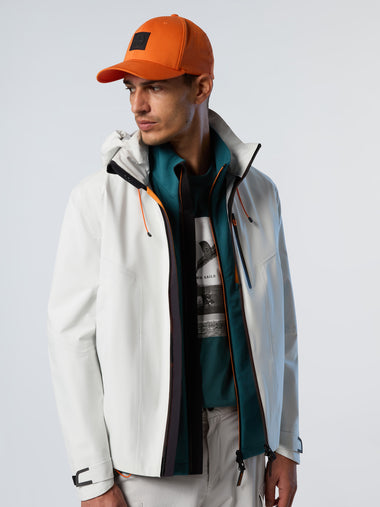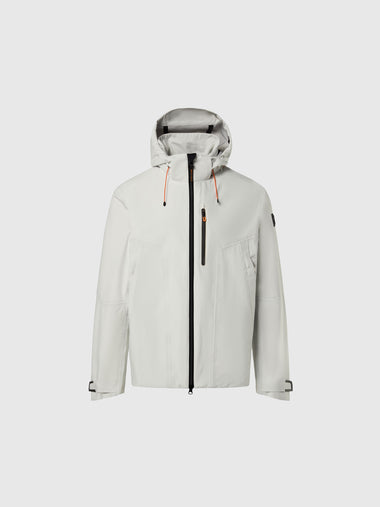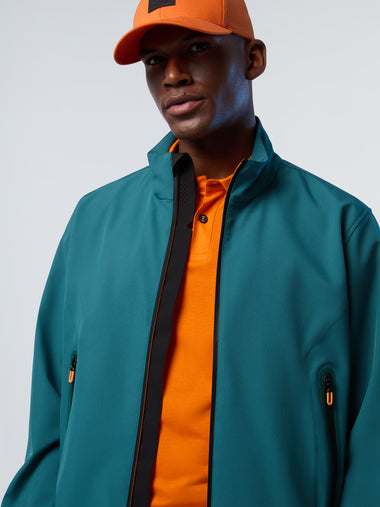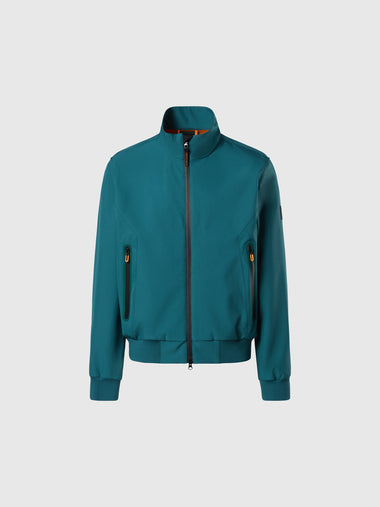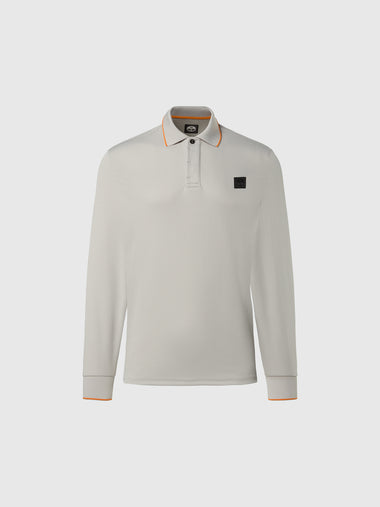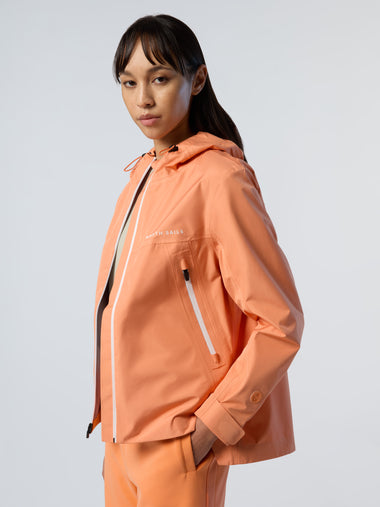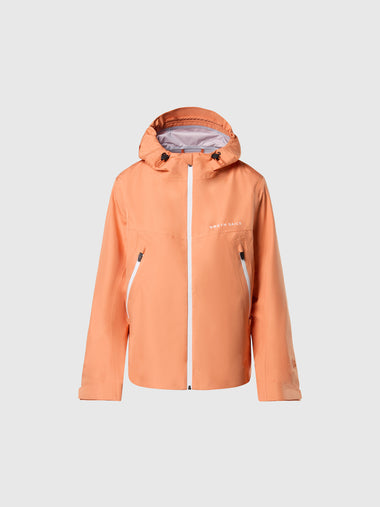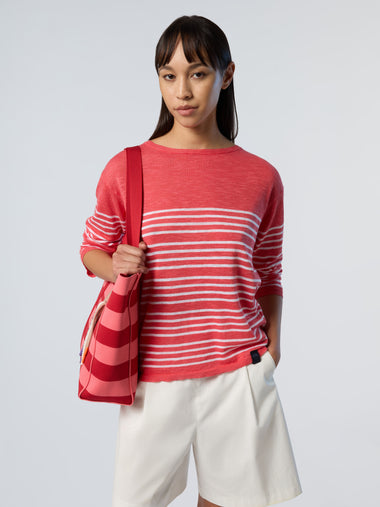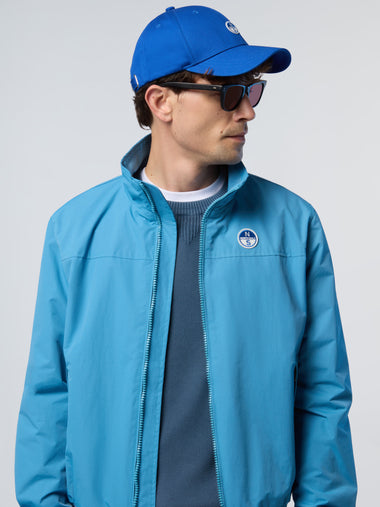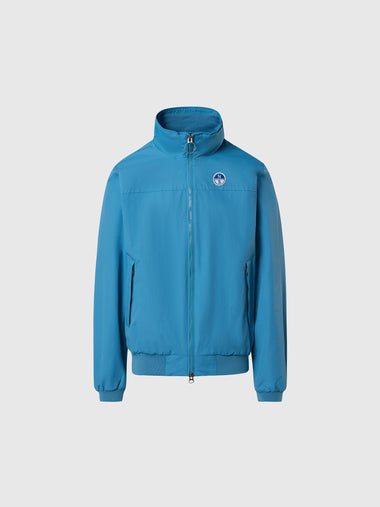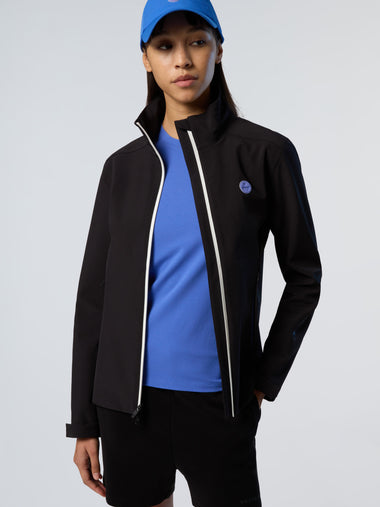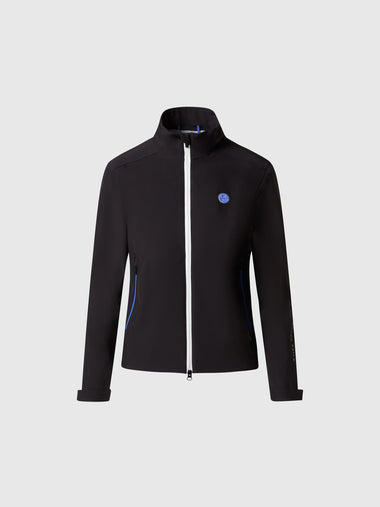NORTH SAILS BLOG
Alle
Events
Guides
News
People
Podcast
Sustainability
Tech & Innovation
Travel & Adventure
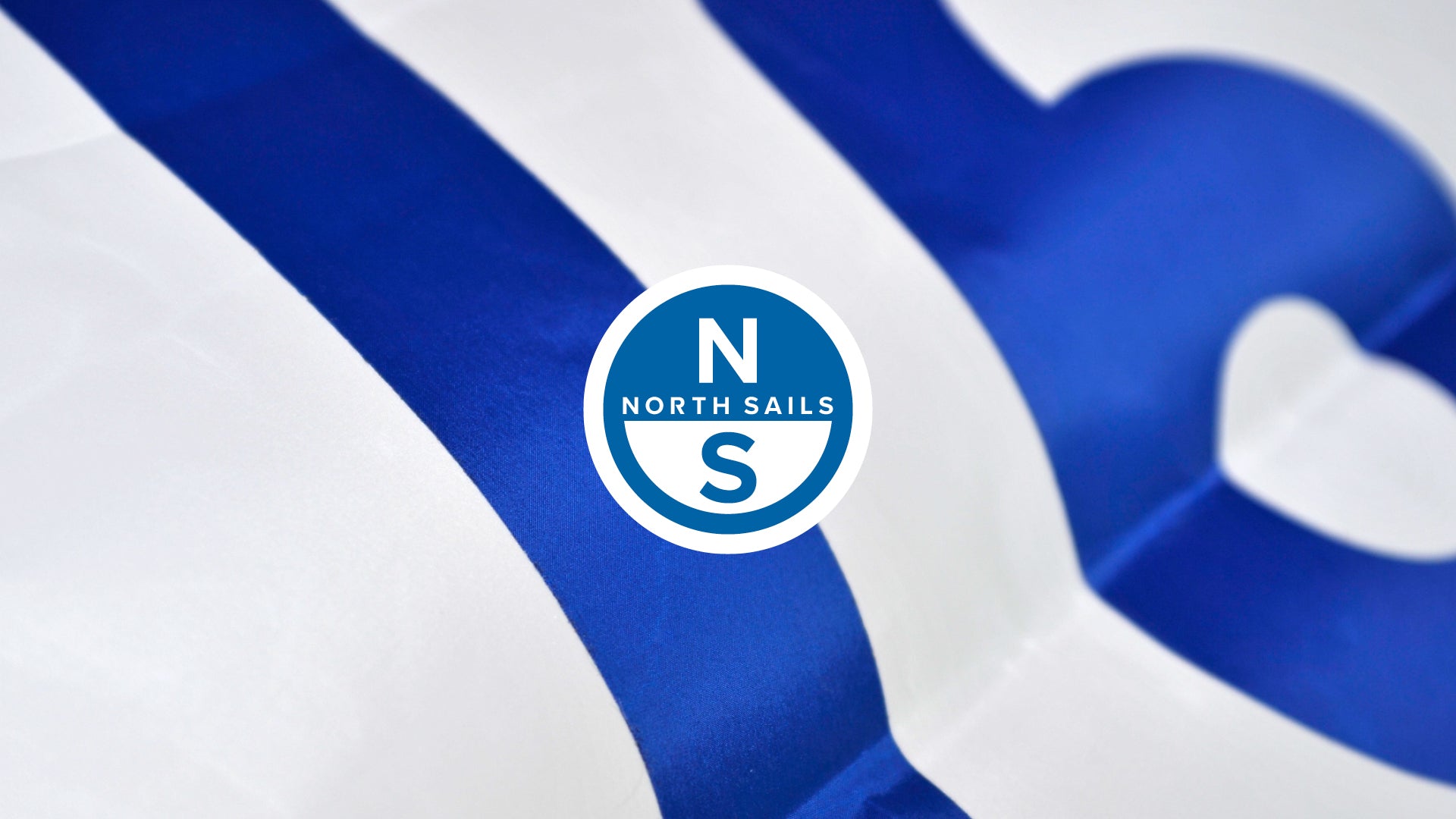
NEW VIPER 640 TUNING GUIDE RELEASED
Experts Share Fastest Numbers for the Vipers
North Sails Viper 640 experts, led by reigning World Champion Jackson Benvenutti and former World Champion Zeke Horowitz with help from Annapolis NOOD Champion Austin Powers, have been hard at work updating your Viper 640 North Sails Tuning Guide. This guide features key updates to make sure your speed stays consistent with the fastest teams in the world.
What’s New?
You will find a new measurement for a shorter headstay, an update on mast butt placement, and hear about new techniques for using your mast blocks and lower shrouds to control headstay tension. You will also discover updated guides for weather jib sheeting as well as how that relates to the vang and cunningham settings. As always, this guide serves to get everyone in the ballpark for world championship caliber speed. Your North Sails experts are eager to help you dial-in and fine tune so you and your team can be set up for success.
Contact us any time! We look forward to helping you achieve your goals.
Contact Your Class Expert Open Tuning Guide
READ MORE
READ MORE
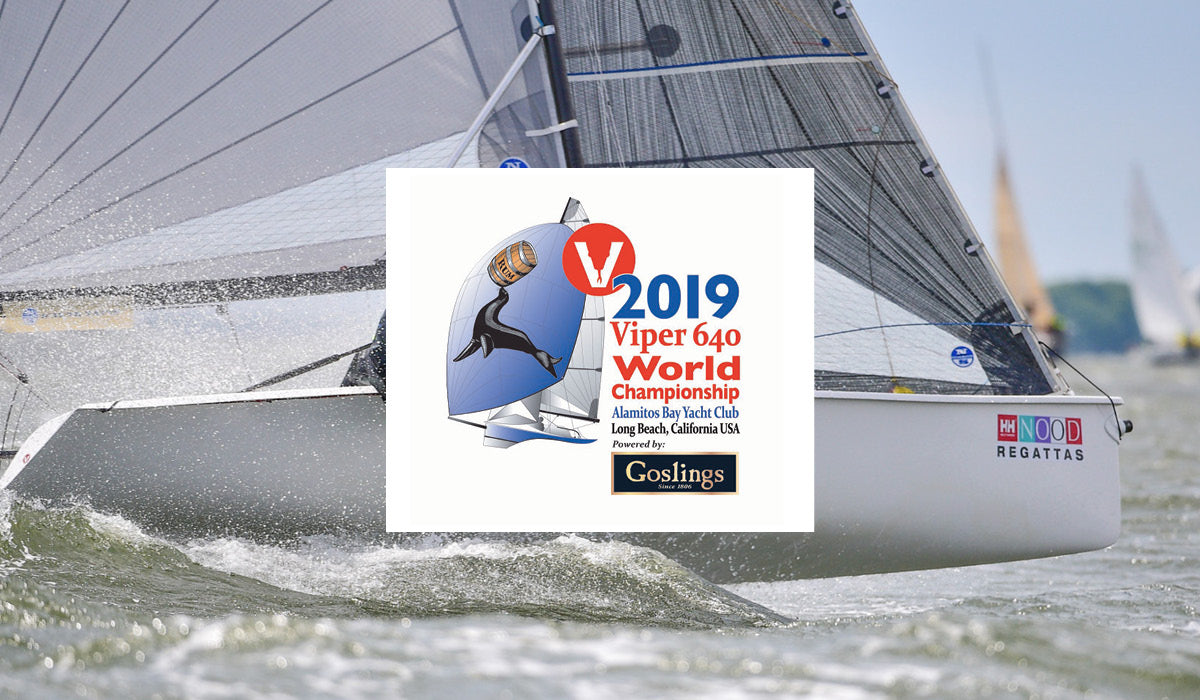
VIPER 640 WORLDS: LOCAL KNOWLEDGE BY ALEX CURTISS
LONG BEACH LOCAL KNOWLEDGE
What To Expect For The 2019 Viper 640 World Championship
Long Beach is hands down the best place to race sailboats in Southern California. With sunny skies, warm temperatures and consistent breeze, the 2019 Viper 640 Worlds should be a spectacular event. We spoke with North Sails expert and local Alex Curtiss to learn what sailors should expect when they leave the dock.
What will the breeze be like?
For the most part Southern California breeze is very predictable, but the morning marine layer will tell you a lot about what to expect on a given day. For example, if you wake up in the morning, and it is very overcast, maybe even a little hint of mist is in the air: expect lighter winds for the afternoon. If you wake up and it is a beautiful sunny day, I would imagine that it will be a typical Long Beach Day.
What is a “Typical” Long Beach day?
Essentially there are three sections to the breeze. Usually just before noon the breeze will be somewhere between 190-210 degrees. This will also mean the breeze is relatively light (5-8 knots). Then the breeze will trend to the right. A lot of times the second race is sailed in a breeze direction between 215-235 degrees, with velocity gradually picking up. Then by about 2:30 pm or 3:00 you could expect the breeze to progress further to the right (240-255 degrees). The velocity will be 15+knots and beautiful.
What are some things to look for to see the trend?
I like to pay attention to the marine layer, the clouds and the haze-line. More often than not, the cloudier it is, the more the breeze will stay to the left. The sunnier it is, the more the breeze wants to move right.
Another thing I pay attention to is the clouds inland over the mountains. If you see big towering clouds in the backdrop of the race course, that means the conveyor belt is going and expect a strong sea breeze in the afternoon. The last thing I pay attention to is the haze line offshore. The angle of the haze-line will tell you how the pressure is filling across the course. Sometimes the haze-line late in the day can run parallel to the port lay line forcing a left twist in the breeze near the top of the course.
What to expect from the different courses?
The NOR calls for three courses:
Course A is the “traditional” ocean course. Everything that was outlined in the previous comments hold true to race track. If there was one thing I would say is when the breeze goes past the 240 mark, the race to the right is real. Getting to the break-wall first with leverage will generally lead to good scores.
Course B is what I call the “Seal Beach” course. A lot of times the water is a little more chopped up due to being so close to shore. Waves will bounce off the beach and then wash together with the incoming swell, so speed is of major importance on this track. There also seems to be a little more left twist in the breeze down there as well, but there are probably more shifts to be played than course A.
Course C is probably my favorite of the three courses. This course is inside the breakwater, so flat water in the mornings and a bit of chop when it gets breezy. It is a bit more college style due to the oil islands, and how they affect pressure and shift. There isn’t a lot of rhyme or reason too much inside, but I would pay attention to the haze line angle if they set a course up near the breakwater.
What about Tide or Current?
Since you are in the ocean, there is really always current going down coast. There is really no relief but keep it in mind approaching marks and laylines.
Favorite Post-Sailing Nosh spots?
You can’t go wrong with the beers and food at Ballast Point Brewing company across from ABYC. Also anywhere on 2nd street is a great place to chill out and debrief with the team.
READ MORE
READ MORE

PETER BEARDSLEY WINS VIPER ACCS - INTERVIEW
2018 VIPER 640 ATLANTIC COASTS
Congratulations Peter Beardsley, Rachel Beardsley and Simon Karstoft Jensen
North Sails Viper expert Zeke Horowitz caught up with Peter, Rachel and Simon for a quick interview to learn what worked for them including their trick of switching drives when going downwind.
It was our first time on the Vipers in the Cheasapeake Bay. We had a lot of confidence on our boat speed, we setup the boat to the North Tuning Guide and were really aggressive on sail trim…” – Peter Beardsley
2018 Viper 640 Atlantic Coast Championship
1. Peter Beardsley
2. Zeke Horowitz
3. Geoff and Mary Ewenson
5. Carl Smit
9. Thomas Loutrel
10. Joe Healy/Bob McHugh
* Denotes Partial North Sails Inventory
Learn more about North fast Viper 640 sails.
READ MORE
READ MORE

VIPER 640 SPEED GUIDE
North Sails expert Zeke Horowitz answers your Viper 640 speed and boathandling questions.
Who sails a Viper 640?
The Viper achieved status as a World Sailing international class, yet its sailors are mostly amateurs—pro sailors are welcome but by rule may not be paid. As a result, this class has a grassroots, sail-with-your friends feel to it. Many sailors in this sporty 21-foot keelboat have college or dinghy background, and in the Northeast part of the U.S., many come from the V-15 dinghy class. Strength helps, but sailors range in age and many women sail, including some husband-and-wife teams. Boats can sail with three or four aboard; the ideal target weight is between 500 and 600 pounds.
The Viper 640 is a fast, sporty boat that rewards a crew that loves hiking out.
What’s involved in crewing?
Most boats have three people aboard, and the skipper trims the mainsheet and vang while steering. On some boats, the middle crew may trim the main or vang at times, but otherwise is mainly hiking, calling wind pressure, and tactics. The Viper is a relatively physical boat, with a shallow and wide cockpit that requires some athleticism to cross. The spinnaker halyard has high loads, and we always like to have the strongest person pulling it up! The chute emerges forward, from a tube, and comes down the same way, with a spinnaker-retrieval line. The middle person also trims the chute on most boats.
Top three Viper speed tips?
Hiking hard counts upwind.
Know the tuning guide—the boat is sensitive to rig adjustments.
Practice! Good tacks, jibes, chutes sets, and douses make a big difference.
What should buyers know when choosing a boat?
Rondar in the UK is the builder and is always building new boats. There are also plenty of used boats for sale, spanning four generations. Built in the ‘90s, the first generation boats had aluminum rigs and lighter keels. Since the carbon rig and keel weight were added in the second generation, the boats have become easier to bring up to current standards. Recent changes have provided big improvements in equipment durability, and a recent shift to a vertical rudder has enhanced the boat’s downwind capabilities in breeze. Adapter kits are available from Rondar. Overall, the class has worked hard to make it possible for older boats to remain competitive. The majority of used boats cost $15,000 to $27,000, and new boats are $38,000.
How does a Viper get around on land?
At 750 pounds and with low windage, a Viper can be towed on a trailer behind a small car. The carbon mast can be stepped and un-stepped by one or two people, and the boat can be rigged or de-rigged in an hour or less. The keel, which has a 220-pound bulb, is secured with a few bolts and is easily lifted via block and tackle in about 30 seconds. Some owners remove the keel completely from the boat when towing, putting it in their vehicle to reduce the chance of damage to the keel cassette.
How many sails are required?
The Viper 640 carries a main and a jib made of woven Dacron or Mylar laminate with polyester scrim, plus an asymmetric spinnaker made of nylon. North Sails offers a racing jib, mainsail, and spinnakers made from DK75, the slipperiest nylon sold, for easier hoisting and dousing in the spinnaker tube. For more general details, visit the Viper 640 class website.
Viper 640 Tuning
What are the keys to rig set-up?
When tuning the Viper 640 rig to race, we pay the most attention to headstay tension, shroud tension, and mast rake. Of these three adjustments, maintaining ideal headstay tension is No. 1 when it comes to maximizing speed. It’s worth noting that without a permanent backstay, mainsheet tension on a Viper is a major factor in creating and easing headstay tension. In light air, sighting up the headstay, you want about 2.5 inches of sag to leeward to power up the jib. As soon as the crew has enough wind to hike out, your goal should be to make the headstay as straight as possible; if you hit a lull and ease the mainsheet, the headstay will sag again and power up the jib in the process. Putting mast blocks in front of the mast at the partners reduces prebend, making the mast stand taller and reducing headstay sag. Typically, top boats have 2.25 to 3.25 inches of mast blocks in front of the mast.
Mast prebend is controlled by adding and subtracting mast blocks. The mast bends easily so it is sensitive to upper shroud tension. The leeward upper provides a good guide to know if your shroud tension is in the ballpark: when you’re fully trimmed in, it should just be starting to go slack. This requires a big range of adjustment – 8 or 9 full turns from light air to heavy. See the North Sails Viper 640 Tuning Guide for more detail.
What else is important?
Other speed controls like the mast butt position can be set in one place and then ignored. While the headstay length can be adjusted, it is generally kept at maximum length. Spreader brackets and tips are also adjustable, but need only be set once. (See North Sails Viper 640 Tuning Guide)
Spreader angles need only be set once, per the North Sails Tuning Guide. The upper shrouds are adjusted frequently, but top sailors adjust the lower shrouds less frequently - using them as a fine tune to keep the mast in column. They maintain just enough tension to be sure there is no leeward sag in the middle of the mast.
Viper 640 Upwind Sailing
Which is better, sailing high or fast?
On the Viper 640, we make a conscious choice at any given time between two modes of upwind sailing—faster and lower, or higher and slower. In light air, we find it’s usually better to sail low and fast due to the keel’s small surface area. With more wind, the choice often depends on the wave state. In smooth water, the boat can sail well in a high, heeled mode. When it’s choppy, we shift to more of a vang-sheeting faster and lower mode. Your crew weight and hiking ability makes a difference in your choice, and you can also use the modes in different tactical situations. For instance, it’s often beneficial to use the higher, more heeled-over mode coming off the starting line in a big fleet so that you work up to the pack on your hip and get clear to tack. Use the bow-down vang-sheeting mode when you want to get over to a puff on one side of the racecourse or roll over a pack to leeward. Our tactician keeps “moding” as a top priority and will relay the preferred mode to the driver, so that the set-up can be adjusted to get the boat as fast as possible in the new mode.
Upwind, where does the crew sit?
The rule of thumb in the Viper is to stay as forward as far you can while keeping the boat very flat. In light air, one crewmember is positioned in front of the shrouds. When everyone starts hiking, the forward crew stays there as long as they can tolerate it, then moves just aft of the shrouds. As it gets windier, everyone slides farther aft, because the boat is wider there.
How do you trim the Viper 640 mainsail upwind?
The mainsail trimmer’s primary focus is on leech tension: being sure to keep it tight enough to power the boat fully. Leech tension flattens the sail plan, tensions the headstay, and gives power to the boat. In normal conditions, we like to see the top telltale on the verge of stalling. When the breeze comes up, using the Viper’s GNAV compression vang helps maintain leech tension. Mainsheet trim requires a fair amount of strength. There are three different mainsheet set-ups, and it’s worth taking the time to study the rules on the Viper 640 class website and understand them all. If you’re in any doubt about what’s best for you, we advise that you choose the rig with the purchase aft so you can always generate the needed leech tension in a breeze.
Three mainsheet set-ups are allowed. Our default recommendation places the purchase aft.
How do you trim the Viper 640 jib upwind?
We adjust the jib leads fairly often, through a range of up to 3 or 4 inches. With more waves and more breeze, we move the lead aft to flatten the sail and/or twist the leech. In strong wind, the key is getting the sail itself flat enough to depower it while still trimming it hard. Otherwise, jib trim is fairly standard: trim in as much as you can but keep the leech telltales streaming. In some conditions, we trim in a little windward sheet to in-haul the jib, but it’s not a major factor like it is in other classes.
How do you shift gears upwind?
Between races, we often adjust shroud tension. During a race, if the wind comes up, we may add mast blocks forward of the mast and move jib leads aft. There’s also a jib halyard fine-tune, which allows us to easily add tension when the wind builds.
Who says what when sailing upwind?
Driving well in the Viper requires focus—watching telltales and waves while maintaining top boatspeed. On our boat, we leave it to the tactician to execute the game plan and determine whether to tack or duck in crossing situations. Another crewmember typically counts down the puff and lulls and relays relative speed information for nearby boats.
Keeping a constant angle of heel is fast when sailing in a breeze.
Viper 640 Downwind Sailing
How fast is the boat downwind?
Sailing downhill is what the Viper 640 is all about. In light or heavy wind, you always feel you’re going very fast. And when it’s windier, you truly are sailing fast—17 to 18 knots in a 20-knot breeze.
Where does your crew sit when sailing downwind?
Like upwind, the Viper likes weight forward to keep the wide stern sections lifted. It’s also good because the sprit is bendy and when the asymmetric spinnaker is flying, it pulls the bow up out of water. In light air, the forward crew stands in front of mast and looks aft to call puffs. The trimmer is at the shrouds, and the skipper sits on the floor, leaning against the wall of the cockpit. As it gets windy, if you’re hiking, you’re sailing too high a course. For stability, load the weather rail with your crew, with the forward person sitting just behind the shrouds.
Under spinnaker, how much heel should be carried?
The key is finding balance in the helm. Usually it comes with 5 to 8 degrees of leeward heel. Our rule of thumb is this: If you have leeward helm, push the tiller until the helm goes away. If you have weather helm, pull the tiller until it goes away. Use main trim and crew weight, along with tiller movement, to keep the boat in this mode with a balanced helm. Unlike heavier boats, the Viper never sails rocked to windward in a deep mode.
What are the keys to trimming when flying the chute?
As with any spinnaker, focus your trim on easing the sheet to the point that the luff curls. It’s a fairly flat sail, so you don’t do a lot of easing and trimming. You do need to be ready for apparent wind shifts, which can be drastic due to speed changes in puffs and lulls. The jib remains set for extra sail area but should always stay slightly eased, with the top of the jib light to avoid interrupting airflow across the spinnaker. The main always stays trimmed in pretty tight for two reasons. First, without a backstay, when it’s windy the mast can invert if you turn downwind by mistake with the sheet eased—this is another reason to sail with the lowers eased. Keeping the boomvang fairly tight also supports the mast. The second reason to keep the main trimmed in is that with the apparent wind forward, trimming with the leech twisted open at the top is faster.
How do you shift gears downwind?
The main downwind gear change relates to positioning crew weight. Move weight forward when you can, and then, when planing, move bodies aft. In waves, use a more aggressive steering mode—you’re passing the waves downwind, so use mainsheet and crew weight to maintain heel angle. Finally, be mindful of the need to stay in control and avoid wipeouts. If you feel the boat starting to wipe out, move crew weight aggressively aft to make the rudder more effective.
Viper 640 Boathandling
What are your top tips to starting well in a Viper?
The Viper 640 does not have a good “slow mode” prior to the start. You are either reaching fast or parked. You’ll need to practice steering with crew weight for those times when you’re ready for a big bearaway to get the boat going again. Like many boats, Vipers don’t go fast when sailing in a pack. Look for separation from others boats so you can go full speed after the start.
What are the keys to tacking a Viper well?
Light air tacks are the biggest challenge in the Viper; the most common mistake is not turning the boat far enough and not rolling it hard enough with your combined crew weight. It’s also important to backwind the jib. The turn takes time, and you need to wait before you roll, usually until the jib is fully backwinded. In light air, the forward person handles the jib sheets and the middle person rolls, aided by a hiking line—on our boat it’s a soft, fluffy, large-diameter line attached to lifting rings on the cockpit floor. The helmsman steers, trims the main through the tack, and aids in the roll of the boat. When it’s windy, the jobs don’t change, but you don’t usually need to roll the boat. Our crew crosses quickly and only backwinds the jib for a moment. In this condition, the helmsman needs to be sure not to oversteer the boat and give up distance to windward.
What are the keys to jibing a Viper well?
Jibing is one of the more fun, challenging aspects of sailing in this class. Big gains and losses are made on jibes. In most conditions over 6 knots, crews do a “blow-through” jibe as described below. (Remember that the jib remains set downwind.) As the boat turns, the forward crew lets the jib backwind so the chute can fill against it on the old leeward side. The trimmer tugs on the old kite sheet a couple times so the chute is slightly over-trimmed. The forward crew then gives the leech of the chute a tug until the trimmer yells to release it (when the sail is full and backwinding on the jib); the chute blows through and fills on the new jibe, and with three or four big tugs on the new sheet, it’s properly trimmed. Good footwork by the crew is key, and of course none of this works if the skipper turns too slowly or too fast. If you turn too slowly, the chute doesn’t blow through; if you turn too fast, you risk wiping out. In less than 6 knots of wind, the crew jibes the spinnaker conventionally, by simply pulling it around jib. The helmsman should turn the boat more slowly, so the trimmer can ease the chute until it’s in front of the headstay. When it’s really windy, say 18 to 22 knots, a blow-through jibe is still fastest. If you prefer something more conservative, try catching a wave, point dead downwind, and pull the spinnaker around in a more conventional jibe style. This eliminates the risk of wiping out in a blow-through turn, but it can also get tippy if you stay dead downwind so long that the boat comes off the wave.
How do you make a fast spinnaker set?
The key to a quick set is a strong middle crew and a well-lubed spinnaker and bag. The tack and and the pole-out line are the same, which means you raise the chute most of the way before setting the pole. On our boat, we make sure to mark the sheet and always have it cleated before the set. On a jibe-set, the middle person hoists (without pre-cleating the spinnaker sheet) and the pole goes out normally. As the sail is going up, the skipper turns the boat dead downwind or to a broad reach and waits for the chute to reach full hoist before making the jibe. The pole goes out as the chute goes up and the spinnaker-retrieval line comes free.
What are the keys to a good spinnaker takedown on the Viper?
Put your strongest person on the spinnaker-retrieval line, which is attached to the middle of the sail. They will use their whole body—legs, arms, and back. The helmsman should leave room to turn downwind briefly during the drop. As the helmsman turns the boat down, the trimmer releases the sheet and takes up on the retrieval line until it’s taut; then the forward crew pops the halyard and immediately lets go of the pole-out line. As the middle crew hauls in the chute, the forward crew watches out for tangles in the halyard or anything else. In light air, you can drop the spinnaker at the leeward mark; in a breeze, at 18 knots, it’s good to leave some extra time. Like other top teams, we dedicate a lot of practice to this maneuver!
How do you recover from a broach or capsize?
Although it’s not common, you can capsize and turtle the Viper 640. Recovery is like any other dinghy. It’s not difficult but it’s not fast either. On the other hand, it’s easy to recover from a broach. Make sure you move crew weight aft in the boat, release the vang, and backwind the jib. Often, that’s all it takes to make the boat bear off; if necessary, release the spinnaker halyard. Or, if you’re strong enough, you can try the “pro move” of pulling the chute around the headstay to backwind the chute as well as the jib.
What are recommended boathandling drills?
On the Viper 640, you can’t practice too many spinnaker sets, jibes and douses, including making layline calls in all wind speeds. You might bear off 15 degrees between 7 and 12 knots. Also, learn how to do hot drops when you’ve overstood and are approaching the mark at a fast angle.
The coolest thing about the Viper 640 class?
What’s great about this class is the culture of knowledge sharing among all the top sailors, sailmakers, and builders. People are easy to talk to and learn from if you’re struggling. Daily debriefs are the norm and people hang out together after racing; it’s common for sailors to eat from a pasta buffet and stand around the keg, listening in a big circle for nuggets of wisdom.
READ MORE
READ MORE

VIPER 640 TUNING GUIDE
MAST TUNING - CARBON MASTS
SET SPREADER DEFLECTION
Check spreader deflection measurement by placing a straightedge or string between the shroud tips at the spreaders. Measure from the side of the straightedge or string closest to the mast, to the back of the sail track. We prefer to have this between 290mm and 300mm. Ideally, set it at 295 mm (11 3/8”). If you have to choose between a deflection measurement slightly under 295 vs slightly over 295, we suggest choosing the larger deflection measurement. Ideally set the overall spreader length set to 683mm (26 ⅞”). This is measured from the mast to the tip of the spreader when the spreader is attached to the mast. You can slide the end fitting in or out on your spreader tip to achieve this measurement. Having to set your spreader length to 27” in order to achieve the proper deflection measurement is not uncommon, and therefore you shouldn’t be worried if you need to do this.
MEASURE YOUR HEADSTAY
From the lower side of the “T” fitting at the top of your headstay to the center of the pin at the bottom, this measurement is 7576 mm. We recommend taking this measurement with the headstay wire laying on the ground as straight as possible - detached from the mast.
MAST STEP POSITION
Check which hole in the step to place the aft pin by measuring from the front edge of the keel slot at the cockpit floor to the aft pin in the mast butt track. This measurement should be about 552mm (1’9 ¾” ). This often leaves 2 holes showing behind the mast on the mast butt track.
MAST PARTNERS
In order to best tune your Viper, it is necessary to restrict the forward mast movement in the partners. You can do this with the line and cleat that comes with the boat. We recommend using mast blocks in front of the mast in order to solidly control mast bend. Adding blocks provides greater headstay tension to keep the jib flat and twisted as the breeze increases. It also helps control the depth in the lower part of your mainsail. The aft block which fits against the front of the mast needs to be filed away to accommodate the angle from the rake and curve of the mast. This will help keep the blocks from climbing up. We recommend a “base” tune of ⅛” of fore-and-aft play (“wiggle”) in the blocks between the front of the mast and the front of the partners. If you are sailing in less than 6 knots, you may want to remove ¼” - ½” of blocks from “base” to induce pre-bend in the mast and slack in the headstay. Once the crew is fulling hiking, you will want to add ¼” of blocks to your “base” to keep the pre-bend and headstay targets. When you are fully de-powered and using heavy vang, you will want to add another ¼” of blocks (having +1/2” total). Your boat may require a different amount of blocking. See the tuning chart below. Use a line to hold the mast forward against the blocks and to keep the blocks from climbing up. This line is absolutely necessary to prevent the mast from inverting when sailing downwind in heavy air. Also remember that as you increase blocks, it may be important to increase the amount of vang tension you carry downwind to avoid mast inversion. The forward most crew has the best vantage point while sailing to look up at the mast and see how much bend is in the mast downwind. We suggest keeping the vang on snug enough to achieve about 1 inch of aft bend in the mast at a minimum while sailing in planing conditions downwind.
UPPER SHROUD TENSION
Put sufficient tension on the upper shrouds with the lowers completely slack to register 15-20 on the PT1 gauge. Sight up the track of the mast and get the track as straight as possible. Then, center the mast by hanging a decent amount of weight (like a tool kit, or a bucket full of water) on the spinnaker halyard and measuring to the shroud base on each side of the boat. The bucket should meet the rail at the same height on both sides of the boat when the mast is centered. Once the mast is centered, tighten the upper shrouds in equal turns on each side to a tension of 26. Once you have your mast straight and centered, insert enough mast blocks in front of the mast (leaving about ⅛” of play between the mast and the blocks). Your headstay tension should read about 15 on the PT1 gauge. Check pre bend by pulling the main halyard down to the goose neck against the back of the mast. Judge distance between the halyard and the back of the sail track at the max distance. This is usually just above the spreaders. You can use a pre-bend checker pulled up on the spinnaker halyard. Picture example shows how it works. The yellow line is the main halyard pulled straight to the gooseneck. For a base setting you would like to attain 2 ¼” of pre bend with headstay 15 and uppers 26 on the PT1 Loos gauge. This is a good base setting for 7 to 10 knots. How much and how soon you need to increase rig tension to de-power and control headstay sag is dependent largely on crew weight and to some degree on sailing style and wave conditions. The chart below represents a guide for roughly 575 lbs of crew weight and the spreader sweep as outlined above. The number of turns will likely vary from boat to boat:
Wind (TWS)
Inches of Blocks
Turns from Base Uppers
Turns from Base Lowers
Shroud Tension
Headstay Tension
0-4
- 1/4”
- 2
- 1.5
20
10
5-7
- 1/8”
- 1
- 1
23
12
7-10
BASE
(1/8” wiggle)
BASE
-
BASE
26
15
10-13
+ 1/8”
+ 2
+ 1
31
19
12-14
+ 1/4”
+ 4
+ 2
34.5
24
14-16
+ 1/4”
+ 6
+ 3
37
27
15-18
+ 1/2”
+ 8
+ 4
39
30.5
18-20
+ 1/2”
+ 10
+ 5
40
32.5
20+
+ 1/2”
+ 12
+ 6
41.5
33.5
LOWER SHROUDS TENSION
To find “base” for your lowers, put a mark on each lower shroud and each upper shroud that measures 4ft up from the deck on each shroud. Now pull the lower shroud towards the upper shroud just barely finger tight and measure the distance between the two marks. This measurement should be about 5 ½”. This technique gets you in the ballpark, but the tension on the lowers need to be adjusted precisely under load while sailing. For this reason we recommend putting turnbuckles on the lowers. In under 8 knots, your lowers should be set such that when you sight up the mast while sailing, you notice about ¼” of leeward “sag” at the spreaders. Once your crew is on the rail, you want to tension your lowers until the mast looks very straight with little to no leeward sag in the middle of the mast when sighting up from the bottom. As you go through the rig tune as the breeze comes up, adjust the lowers to maintain a straight mast. If you are over-powered and trying to execute a “bow down” mode in big breeze, you might tension the lowers enough to see about ¼” of mast “poke” (poking to windward) at the spreaders. Note: It is critical to not over tension the lower shrouds in heavy air. If the lower shrouds are too tight, it could contribute to inverting the mast while sailing downwind and causing breakage. The more tension you carry on the lowers, the more vang tension you should carry downwind.
SAIL TRIM
JIB LEAD POSITION
*** For a jib tack shackle height of 2 ¾” *** The standard shackle on a Viper is 2 inches. We suggest adding a ¾ inch twist shackle to the 2 inch shackle provided with the boat to achieve the optimum 2 ¾” jib tack height. Generally the jib lead should be set more forward in light air to allow the foot to have 6” of round in it. This will have 7 or 8 holes showing behind the jib lead. As soon as the breeze is strong enough to justify hiking, the lead should come aft as much as needed to flatten the foot nearly to a straight line when the leech is properly trimmed. This setting typically has 5 holes showing behind the jib lead.
JIB SHEET TENSION
Your North jib has a leech telltale ¾ of the way up he leech. This telltale can be observed by the jib trimmer from the leeward side in light air. In any hiking breeze it can be observed through the luff window in the main. This is to use in judging sheet tension. In most conditions trim the jib in until this telltale no longer streams aft, then ease it out until it just streams aft. Generally the middle batten in the jib will point straight aft when it is properly trimmed. The top jib batten is full length. In under 6 knots, use the soft batten provided. As soon as the breeze is over 6 knots it is important to change to the stiffer top batten. This helps keep the leech open as the wind increases. Once you are fully de- powered, go to the stiffest batten you have, and you might consider putting the light air batten AND the heavy air batten in at the same time!
WEATHER SHEETING
Many teams have found that weather sheeting can be quite effective sailing upwind in winds from 5-15 knots, or until your team is fully overpowered. A general base setting while weather sheeting puts the clew of the jib directly over the top of the inboard fiberglass combing that the jib track is recessed into. This is about 2 inches of clew movement to weather, and about 4 inches of weather jib sheet pulled through the cleat (because the jib sheets are a 2:1 purchase). The further aft you move the jib car, the more effective weather sheeting becomes.
JIB SHEET TENSION
Your North jib has a leech telltale ¾ of the way up the leech, and another one off the leech at the top batten. This telltale can be observed by the jib trimmer from the leeward side in light air. In any hiking breeze it can be observed through the luff window in the main, or leaning forward and looking in front of the mast from the rail. This is used to judge sheet tension. In most conditions, trim the jib in until this no longer streams aft, then ease it out until it just streams aft. Generally the middle batten in the jib will point straight aft when it is properly trimmed.
TOP JIB BATTEN
The top jib batten is full length. In under 6 knots, use the soft batten provided. As soon as the breeze is over 6 knots it is important to change to the stiffer, standard top batten. This helps keep the leech open as the wind increases. Once you are fully de-powered, go to the stiffest batten you have, and you might consider putting the light air batten AND the heavy air batten in at the same time!
MAINSAIL OUTHAUL
Easing the outhaul in light air powers up the main. Judge the outhaul tension at the mid-point of the boom. Look at the distance between the side of the boom and the foot of the sail. In rough water light air conditions easing the outhaul to open the foot as much as 3-5” can be fast. In smoother water generally keep it tighter. As soon as there is enough wind to hike, tighten so the sail lays against the side of the boom.
MAINSHEET TENSION
In light and moderate conditions when heeling can be controlled with hiking, the aft end of the upper battens (on either side of the Viper insignia) should be parallel to the boom. This may require quite a lot of sheet tension. In stronger breeze, applying vang tension and a couple of inches of sheet ease will allow you to keep the jib pressed, and the bow down with the boat moving forward. The goal here is to find the angle of heel that allows the boat to sail with as little helm as possible. Use vang adjustments, mainsheet adjustments, and feathering to keep that angle of heel as consistent as possible. Remember that the mainsheet is the biggest controller of your head stay tension. If you need to ease your main sheet to keep the boat flat, be sure you have adequate mast blocks and lower shroud tension. If the head stay still looks too “saggy,” ease the jib sheet an inch or two to de-power the jib and straighten the head stay.
GNAV (Reckik in Britain, or Vang)
Under 10 knots make sure the gnav isn’t applying any downward pressure on the boom. This applies for both upwind and downwind. As the wind becomes stronger, apply progressively more tension to keep the boom down as the mainsheet is eased in the puffs. Not only does the Gnav help keep leech tension when easing the main, it bends the middle and bottom of the mast which flattens the main and de-powers it. It is only necessary to pull max vang tension on if it is choppy enough that you need to use the “bow down” mode to power through the chop. It is essential to have the appropriate amount of blocks in front of the mast to ensure the headstay stays tight.
GNAV & CUNNINGHAM RELATIONSHIP
As you will notice, when you progressively apply more vang tension, the mast will bend progressively more, therefore the luff of the mainsail will develop progressively more wrinkles. As you pull on the vang to depower, ideally you will pull the cunningham on as well to help smooth out the luff of the sail. If you ease the vang (i.e. you sail into a lull), make sure to ease the cunningham too. The two controls (vang and cunningham) should be adjusted together appropriately.
READ MORE
READ MORE






